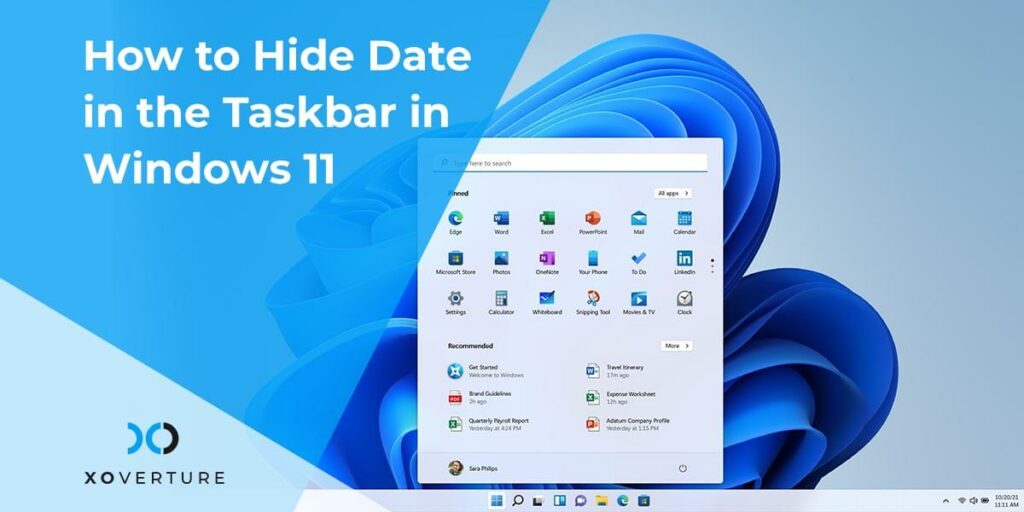Windows OS is highly known for its features and customizations and with the release of Windows 11, we were introduced to a host of new features. However, a couple of them are not so easy to manage. The date that appears on the taskbar is one such feature; many people find it highly distracting and would rather check it on their phones. So, let’s look at how to conceal the date in the taskbar in Windows 11.
In windows 11, the code that makes the taskbar function has been rewritten from the ground up, hence it takes a little more than simply opening a menu and flicking a switch to remove the date and time from the taskbar.
The simplest way to hide date in the taskbar is by going to the Search button >> Type Group Policy >> Select Edit Group Policy >> A new window will open >> From the left pane of the window, expand Administrative Templates >> Left Click Start Menu and Taskbar >> In the right pane of the window, select Remove Clock from the system notification area >> A pop-up window will open >> Check Enabled >> Click Apply and Ok >> and you are done.
In case you’re not able to use the group policy editor for some reason, you can simply follow the steps mentioned below to hide the date in the taskbar:
- Start with opening up the search menu and type ‘Registry Editor’. Right-click on it and select ‘Run as administrator’. If the ‘User Account Control’ pop-up appears on your screen, click on ‘yes’.
Before you proceed, create a backup of your data by selecting ‘File’ and then click on ‘Export’. Enter a name and then click on ‘Save’. Once done, continue with the further steps.
- Navigate to this path: HKEY_CURRENT_USERSoftwareMicrosoftWindowsCurrentVersionPolicies
If you are not able to locate directly, double click on the ‘HKEY_CURRENTUSER‘ folder then double click on the ‘Software‘ folder. Do the same for the ‘Microsoft‘ folder. Locate the ‘Windows‘ folder and then click on the ‘Current Version‘ folder. Beneath it, find the ‘Policies‘ folder and click on it. Then finally, you will reach the ‘Explorer‘ folder, and open it.
- In some cases, the Explorer subkey is missing and it must be created in order to proceed with the next step. To create the subkey, select ‘New > Key’ from the context menu when you right-click on the Explorer key. Now, name this newly generated key ‘Explorer’. Double click on it and continue with the next step.
- On the right side of the screen, you will find a blank area. Move your cursor there and right-click to select ‘New‘. Then click on ‘DWORD (32-bit) Value‘.
- Name this value ‘HideClock’ and hit the enter button. Please note that the name is case sensitive and hence type it exactly as mentioned.
- Double click on ‘HideClock’ and a popup will open on your screen. Type the value 1 in place of the ‘Value data’ and the base should be ‘Hexadecimal’. Select ‘ok’ once done.
- Close the Registry Editor and reboot your computer to see the changes.




